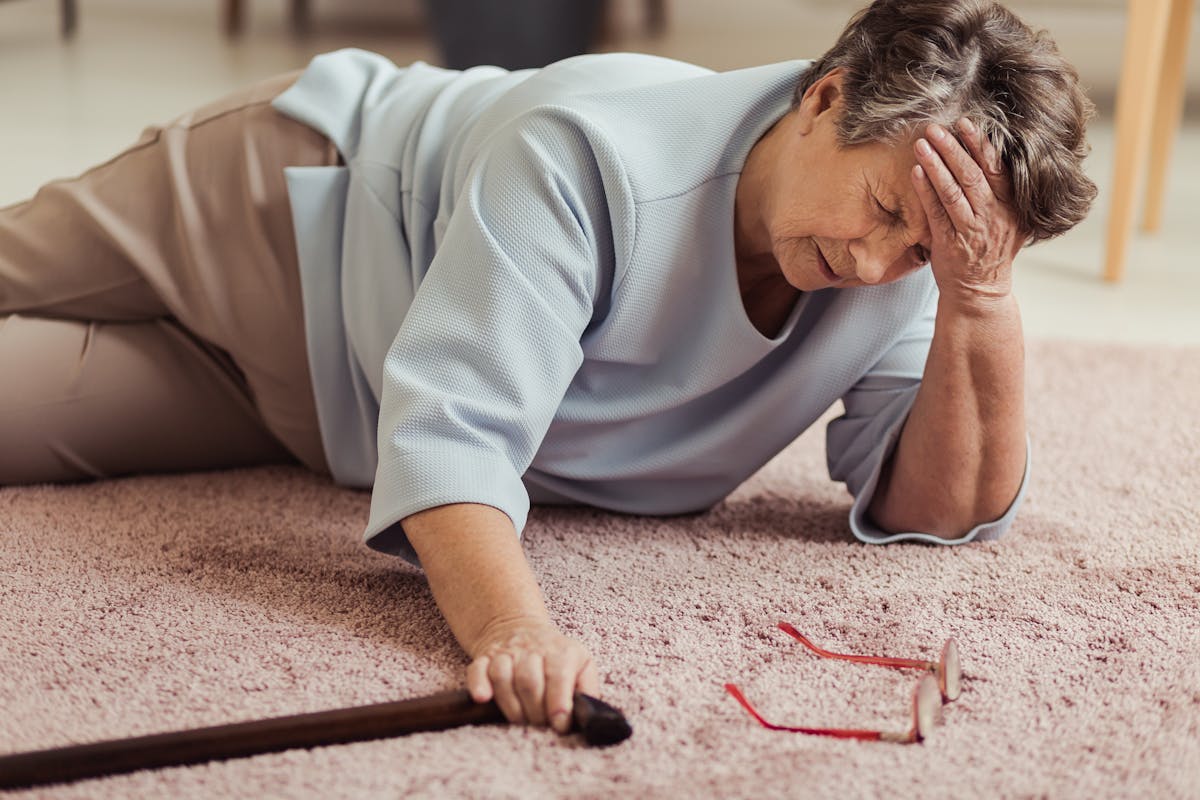What Are the Leading Causes of Falls in Older Adults?

The statistics on falls among older adults are a real eye-opener: one in four seniors falls every year. That translates to one senior experiencing a fall every second of every day in the U.S. It is the leading cause of fatal and nonfatal injuries among older adults. Equally troubling is that once a senior has had a fall, they are two to three times more likely to fall again.
Contrary to what many people believe, falls are not a normal part of the aging process. There are steps older adults can take to avoid becoming one of those statistics. And it all starts with learning the most likely reasons why seniors might take a tumble.
Why Do Older Adults Experience Falls?
If you are trying to lower your fall risk or that of a senior loved one, we have some suggestions you will find useful:
- Unidentified hazards in the house: Older homes often weren’t built with senior safety in mind. While some hazards, such as steep stairs or the lack of a standalone shower, are easy to spot, others aren’t. Poor lighting is a good example, as are worn carpeting and throw rugs. By conducting a risk assessment of a loved one’s house, you might be able to identify and remedy potential hazards. This fall prevention checklist from the Centers for Disease Control and Prevention is a good resource for evaluating a home’s safety.
- Side effects from medication: This fall risk is sometimes overlooked. Medications frequently have side effects or create adverse reactions that include dizziness. They may cause an older adult to be unsteady on their feet, which may lead to a fall. The pharmacist or your primary care physician can help identify concerns. This list from Harvard Medical School will also help you learn more.
- Poor hydration: Dehydration can also result in falls. And often people don’t even realize when they’re dehydrated. Unlike many younger adults, seniors didn’t grow up carrying water bottles with them everywhere. Some chronic health conditions, such as kidney disease, Sjogren’s syndrome, and ulcerative colitis, can also increase risk. Medications can play a role, too. Blood pressure medicine, chemotherapy, laxatives, and diabetes drugs are just a few that can cause dehydration.
- Too much sitting: A sedentary lifestyle also puts people of all ages at higher risk of falling. Sitting too much and getting too little exercise can cause muscles to deteriorate. The loss of core strength can lead to balance problems that ultimately result in a fall. Unfortunately, once a senior has fallen, they may become fearful of doing so again. That may cause them to become even more sedentary. A senior who has had a fall might need physical or occupational therapy to help them regain confidence on their feet.
- Unbalanced diet: Poor nutrition is another risk factor. For seniors who’ve given up driving, not wanting to ask friends and family for transportation to the grocery store can be the underlying reason. They rely for most of their meals on easy-to-prepare foods, such as frozen dinners and foods with a long shelf-life. While convenient, many are high in fat and sodium and low in nutritional value. Home-delivered meals, such as Hello Fresh or Home Chef, might be good solutions.
- Vision problems: Conditions like cataracts and glaucoma become more common with age, as does a loss of depth perception. An older adult’s glasses might be outdated, causing them not to see well. All of these types of vision issues can lead to falls, especially in a house with uneven flooring, poor lighting, or a lot of stairs. It’s just one more reason why a home safety evaluation is helpful.
Finally, if you or a senior family member feels unsteady walking or rising from a chair, it’s probably a good idea to schedule a physical. A primary care physician will likely be able to determine the cause and create a plan for treating it.
Invest in an Emergency Call Device
Experiencing a fall when you are home alone can be frightening, especially if you aren’t able to reach the phone to call for assistance. That’s where a mobile monitoring device can come in handy. With a simple press of a button, the user will be connected with someone who can help. Call 1-844-203-5617 to learn more!